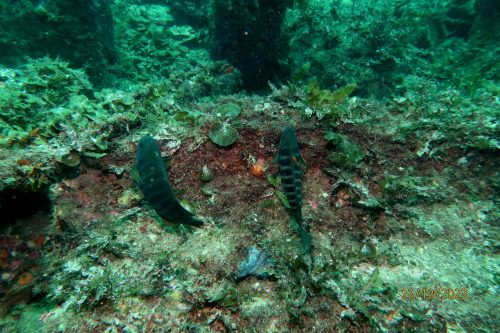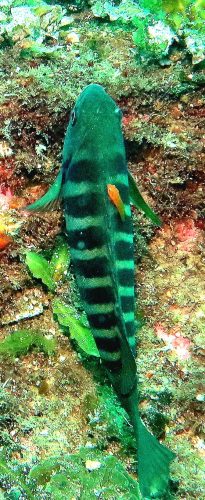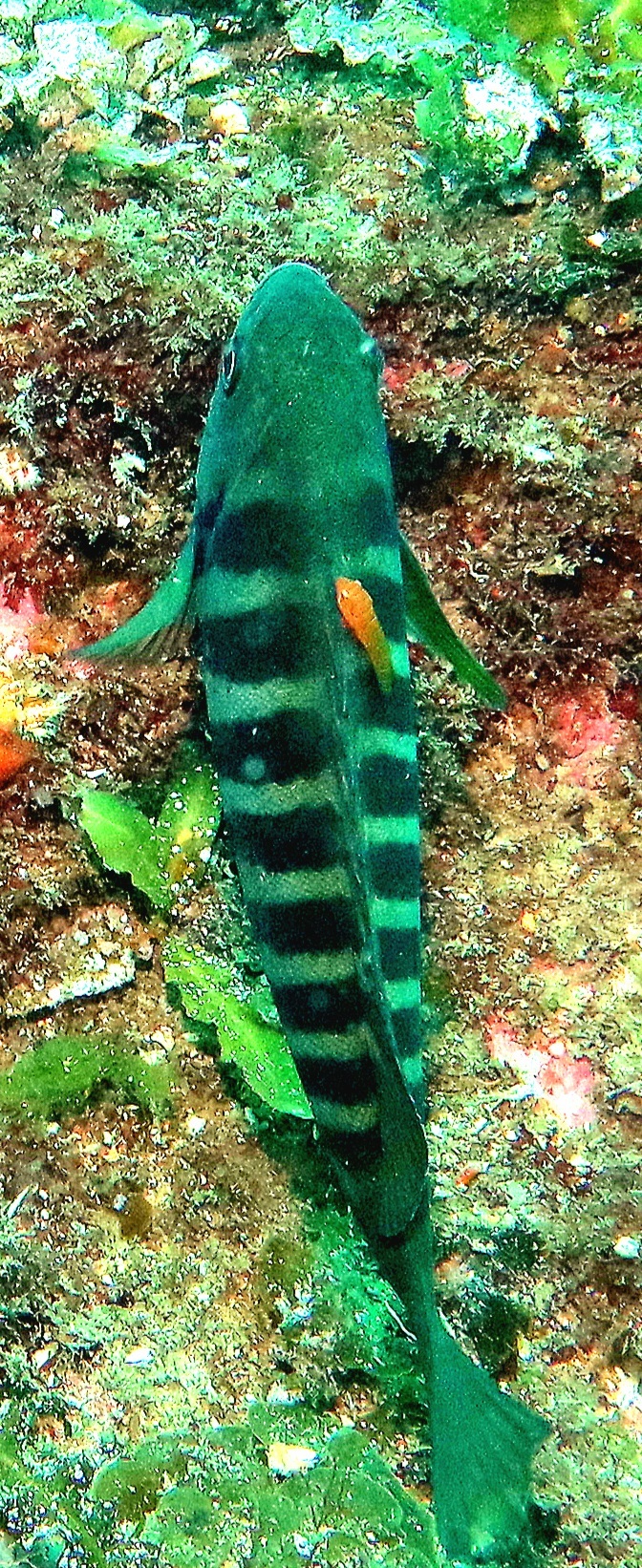I was diving at the Rapid Bay jetties just before last Christmas. I took this photo of this dorsal view of Zebrafish being cleaned by Western Cleaner Clingfish, Cochleoceps bicolor: –

I have posted both that photo and this cropped version on iNaturalist : –

These two images were accompanied by the following comments: –
“I’ve decided to post this image again, with the SUBJECT now the Western Cleaner Clingfish (WCC) on the midfield Zebrafish ,because the cropped version nicely shows one of these Zebrafish client’s tricks for gaining the host’s attention. The Zebrafish with the WCC on it has altered its bands so they don’t match up on L and R sides. This may also indicate a degree of tactile rapture related to the contact with the host, but whatever the basis, as far as I know, this ‘switching’ from bilaterally symmetrical bars to asymmetric bars has only been documented when Zebrafish are being cleaned.
“(By a WCC in this case, but possibly they sometimes also do it when being cleaned by other hosts e.g. Rockpool Shrimp, juvenile Moonlighter and juvenile Pencil Weed Whiting).
“*If anyone has photographic evidence of any client species other than Zebrafish presenting overt morphological asymmetry (L vs R) as a transient phenomenon specific to a client host interaction, I would greatly appreciate their contacting me, or simply posting their observations on iNat.”
In a later comment under the original post I added, “I might be overstating the seemingly unique feature I’ve described in the Notes above. I haven’t reviewed any other observations on this website that show dorsal views of reef fish being cleaned, for starters (dorsal views ,or perhaps frontal views, obviously being necessary to determine whether the client has activated their asymmetric morphological appearance).”
I later asked Mark McGrouther if he knew of this behaviour having been documented for clients of Eastern Cleaner Clingfish, given the larger number of divers on the eastern seaboard.”
His response was “What an interesting observation! Thank you for alerting me. I haven’t heard of a fish altering its banding pattern while being cleaned. I’ll make some enquiries.”
This topic is likely to be ongoing, but in the meantime I wanted to flag this particular observation for MLSSA members.

